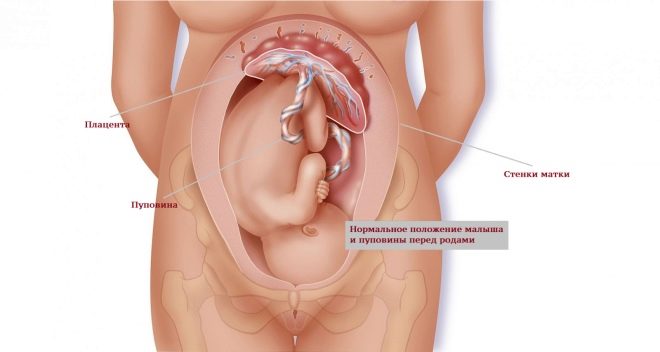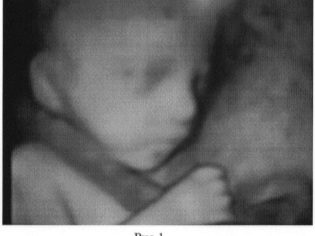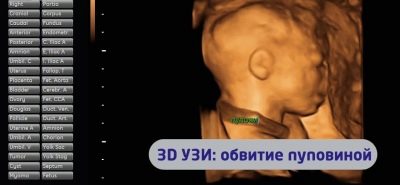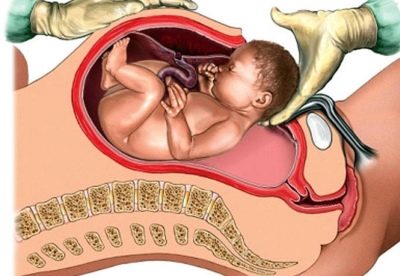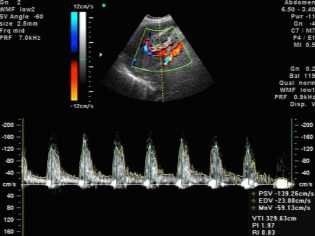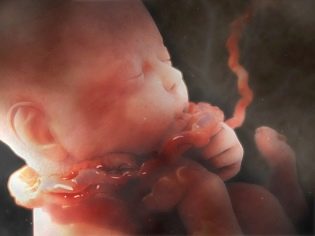Is a single cord entanglement dangerous?
During pregnancy, pathologies may develop in which the umbilical cord is involved. One of them is the entanglement of the umbilical cord of the body of the fetus. This article will tell in detail about whether a single cord embroilment is dangerous during pregnancy.
What is it?
All the nutrients for their growth and development of the fetus, located in the womb, receives through the umbilical cord (umbilical cord). Inside this unique organ are the blood vessels through which oxygen enters the children's body, as well as the nutrients necessary for intrauterine development. Normally, the umbilical cord is an elongated cord or “cord,” which is about 50–70 cm long.
However, in obstetric practice, there are cases when the umbilical cord lengthens. In such a situation, it can fold, forming loops. A single cord entanglement is a pathology in which the umbilical cord covers a child’s body once.
The entanglement of the umbilical cord may occur at different sites. Thus, the fetus may be entwined with a umbilical cord at the level of the neck, abdomen or limbs. Single entanglement often occurs in early pregnancy when the baby is small and very active.
If the entanglement of the umbilical cord occurs much earlier than the period of 30 weeks of gestation, then in such a situation it is possible that the child “unravels” on his own. If there is a sufficient amount of amniotic fluid in the uterus and the child is small, then it will be quite easy for him to do so.
If the doctors find the entanglement with the baby's umbilical cord at 36–38 weeks of gestation, then the possibility of self-disentangling is already significantly reduced. The large size of the baby at the final stage of pregnancy before giving birth does not allow him to make active movements, as before. This contributes to the fact that the entanglement of the umbilical cord in this case will be saved directly to the birth.
Implications for the child
The prognosis of the further course of pregnancy with this pathology may be different. Doctors note that the intrauterine development of the fetus during such a complicated pregnancy largely depends on the clinical variant of entanglement.
Experts identify tight and loose cord entanglement. With the tight entanglement of the loop of the umbilical cord, the child’s body is squeezed tightly enough. If the fetus is wrapped with loops of the umbilical cord weakly, then in this case they say about netting entanglement. Each of these clinical pathology variants has its own peculiarities of development.
No
This clinical option is perhaps more favorable. Reviews of women who are faced with this pathology during pregnancy also confirm this. When the cord is entangled, the umbilical cord loops are at some distance from the child's body. Between them and the skin of the baby there is a small space. With this clinical variant of the pathology, it is much easier for the baby to “unravel”. In case of non-invasive entanglement, as a rule, there is no compression of the internal organs of the baby, which means that he does not develop dangerous pathologies.
The prognosis of pregnancy with this clinical pathology is usually favorable. If the pregnancy is not complicated by any other conditions, then doctors may even allow natural childbirth.In this case, the tactics of childbirth is important: after the birth of the head, the obstetrician can gently remove the umbilical cord loop from the baby’s body. So the biomechanism of labor will not be disturbed.
If, even during initially normal labor, complications develop, then a caesarean section can be performed in such a situation. Usually this operation is performed to save the life of the baby.
Tight
This option is already less favorable. With tight loops of the umbilical cord of the baby’s body during pregnancy, certain complications can develop. This condition is quite dangerous, as there is a fairly high risk of hypoxia. Many expectant mothers think that intrauterine hypoxia develops if the umbilical cord loop is on the baby's neck. They believe that the umbilical cord pinch the neck where the trachea is located, which leads to respiratory failure in the child. It is a myth.
During fetal life, the fetus gets dissolved oxygen in the blood, since its lungs cannot yet function independently. Oxygen enters through umbilical blood vessels, which are located in the umbilical cord. Tight entanglement can lead to the fact that the umbilical cord is clamped in some areas. This may contribute to the reduction of blood flow, and hence the development of oxygen deficiency in the fetus.
In such a situation, the internal organs of the baby (including vital) cease to fully develop. The risk of congenital abnormalities in the baby is quite high. With a tight entanglement, doctors necessarily evaluate the degree of change in blood flow through the umbilical vessels. To do this, they assign doppler sonography to the expectant mother. Using this painless diagnostic method, doctors get information about how blood flows in the umbilical arteries and veins.
With a single tight cord cord entanglement, fetal blood flow in the umbilical vessels may not be disturbed. In this case, the pregnancy develops normally, and the risk of developing dangerous complications is quite low.
If the blood flow through the umbilical vessels is disturbed, the threat of the development of dangerous pathologies is already higher. In such a situation, the future mother and her baby are more closely followed by medical observation.
In this case, the pregnant woman will need to visit her doctor more often, as well as the ultrasound room. If necessary, the future mother will be additionally assigned and cardiotocography - a method that allows to evaluate the heart activity and motor activity of the fetus. If intrauterine hypoxia is detected, caused by a single cord entanglement, doctors may even resort to prescribing medications. For therapy, means are selected that have a positive effect on blood flow.
According to the testimony, antispasmodics are prescribed, as well as disaggregants. The doctor may prescribe vitamin therapy, which, as a rule, is used for quite a long time.
If the condition of the fetus on the background of the developing pathology is greatly deteriorating, then in this case, the expectant mother can be hospitalized in the hospital (for intensive treatment). In late pregnancy, the appointment of a date for early childbirth may be considered. Typically, these measures are used in the development of a number of complications that are possible with a single cord entanglement of the fetus.
See if the umbilical cord is dangerous in the next video.

